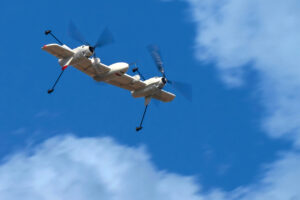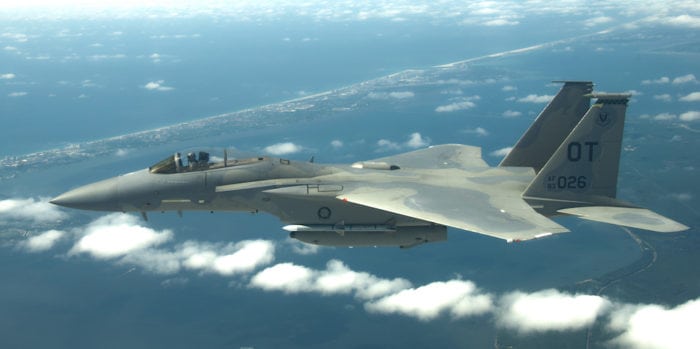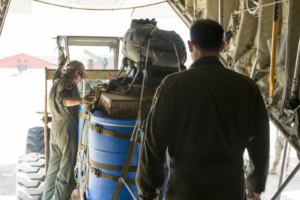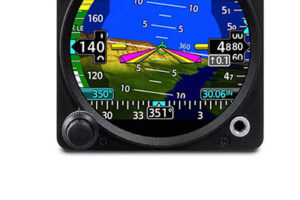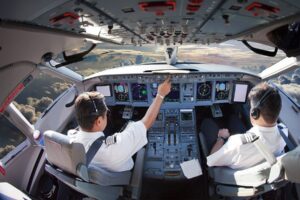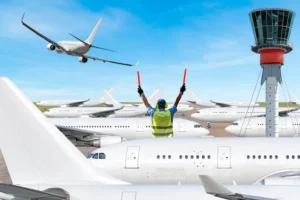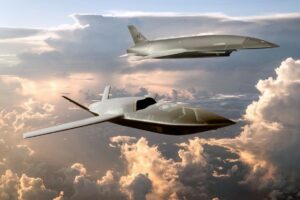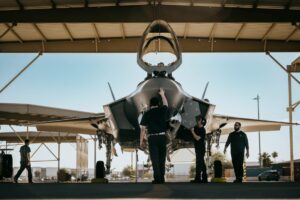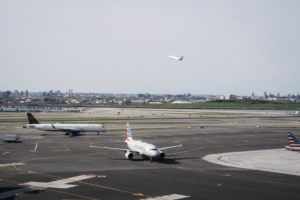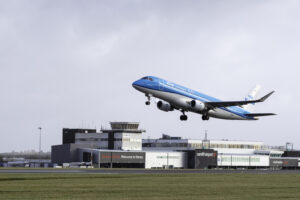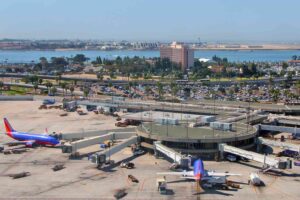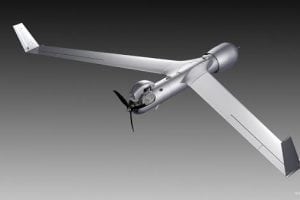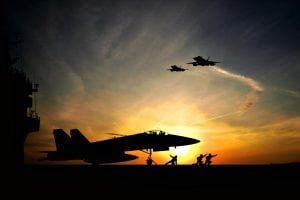Safety in Avionics: A Call for Spoiler Alerts
By David Evans | July 1, 2001
Send Feedback
COCKPIT VOICE RECORDING OF A wet runway landing that went badly:
First officer: "We’re down (pause). We’re sliding."
Captain: (Expletive – expletive).
Unknown: Oh sh- (no interpretation needed in this G-rated magazine).
Sound of several impacts.
This 25-second transcript was from the cockpit voice recorder of American Airlines Flight 1420, an MD-83, which crashed June 1, 1999, while landing in a thunderstorm at Little Rock, Ark. The captain and 10 passengers were killed when the airplane hit a steel light stanchion after roaring off the far end of the runway.
The first officer, who survived with a badly broken leg, explained the final moments: "I put my hands up because I saw Capt. [Richard] Buschmann put his hands up off my–in my peripheral vision, and all I remember is the explosion, if you will, of glass and debris on the left side."
Fast forward about eight and half months to February 16, 2000, to the landing of American Airlines Flight 9503, an MD-83. On the wet, or rain-patched runway at Palm Springs, Calif., a 29-minute recording reveals that this landing, too, went badly:
First officer: Get off it, get off it, get off it, get off it (pause). I’m on the brakes with you, Dave.
Sound of several impacts.
Sound of aircraft slowing.
First officer: It’s OK. I don’t know what the hell happened.
Captain: I don’t know.
First officer: It took out (unintelli-gible).
Tower: American ninety-five zero three, do you need any (sound of chuckle) assistance?
In the post-incident interview with investigators, the first officer said the landing felt normal until the captain, who was the pilot flying, activated the thrust reversers, at which point "everything got screwy." The nose of the airplane began swinging to the right quickly, to an angle of about 30° to the runway centerline, and the right wingtip started to rise. The first officer urged the captain to "get off it," to "come out" of reverse thrust in order to regain directional control. The left main gear slid about 25 feet (7.6 meters) off the left side of the runway into gravel. The crew was able to maneuver the left gear back onto the hard surface and slow the airplane to taxi speed. The airplane received minor damage from flying gravel; no one was injured, but the greater injury may have been to the egos of the embarrassed crew (note chuckling from the tower).
Failure to Arm
Both events hold one thing in common: the spoilers did not deploy. There’s another key item connecting both events: it’s pretty likely that the spoilers had not been armed to deploy automatically after touchdown.
In the Flight 1420 case, investigators found the American Airlines practice differed from certain other carriers, in that both pilots were not required to confirm the spoilers’ arming as they went through the landing check list, and they were not required to observe and confirm spoiler activation after touchdown.
The circumstantial evidence is pretty strong that the spoilers were not armed. The readout from the flight data recorder (FDR) indicated the spoilers did not deploy (hence, they were not armed). An FDR trace of the previous flight recorded full and sustained deployment of the spoilers to the 60° position–evidence that they were functioning properly immediately before the accident flight.
After the Flight 1420 crash, the carrier required verbal confirmation that the spoilers were armed.
In the transcript of the Flight 9503 landing at Palm Springs, the copilot declared, "Spoiler levers armed." However, there was no confirmation from the captain, the pilot flying. In his post-incident interview with investigators, the captain said he did not know if the first officer armed the spoilers. He said that he himself had not armed them and had not looked to see if they had been armed.
Within the week following the Palm Springs incident, American Airlines issued Revision Number 31, effective Feb. 23, 2000, to its DC-9 operations manual. Among its new injunctions:
The pilot not flying will call out each item on the mechanical checklist.
The captain will always arm the spoiler for landing (it’s on the left side of the center console).
Both pilots will check for spoiler deployment. If the spoiler lever does not move back to the full aft (Ext) position, the captain, regardless of which pilot is making the landing, will manually deploy spoilers.
When the spoilers deploy, the pilot not flying (PNF) will call out "Deployed."
If they do not, or fail to remain deployed, the PNF will call out "No spoilers" and the captain will manually deploy the spoilers.
Landing with No Warning
The company mandates point to the Flight 1420 crash and the Flight 9503 incident as "handling" events. But did the problems associated with "handling" stem from a design deficiency–the absence of a spoiler "not armed" warning system?
Regarding the Flight 1420 tragedy, one pilot argues, "If I had to attribute blame, I would give 70% to the design of the MD-80 series that enables the crew to land, not get spoilers, not receive any warning of an unarmed spoiler, and not be aware of this." This pilot believes that if Capt. Buschmann had gotten his spoilers at Little Rock, he most likely would have retrieved the situation. (Without them, the aircraft was doomed to overrun, as only some 7% of the accident airplane’s landing weight was on the main gear–hardly enough for the brakes to gain appreciable stopping power.)
"Without spoiler deployment, there was no weight on the wheels, so braking and directional control were compromised," he observes. Yes, the pilot agrees, manuals can be rewritten, but the problems with "handling" must track via this design deficiency waypoint.
On virtually all transport-category aircraft, it’s nigh impossible to land without a warning that the landing gear is not down. It almost takes an act of willful, deaf, blind and dumb negligence to land with the gear up. And modern aircraft with an autoland capability will signal an alert if the spoiler system is not set and functioning properly.
Given that spoilers (what the British call "lift dumpers") are key to stopping the airplane, it would seem that despite the existing panoply of warning lights, bells, buzzers, etc., all aircraft not already so equipped could use one more means of getting into the pilot’s head: a spoiler not armed alert. There can be no more dismaying feeling than to be sliding rapidly toward the end of a wet runway–up the proverbial creek, as it were, without the spoiler paddle.
David Evans is the award-winning editor of Air Safety Week. Comments can be sent via e-mail to devans@pbimedia.com.



